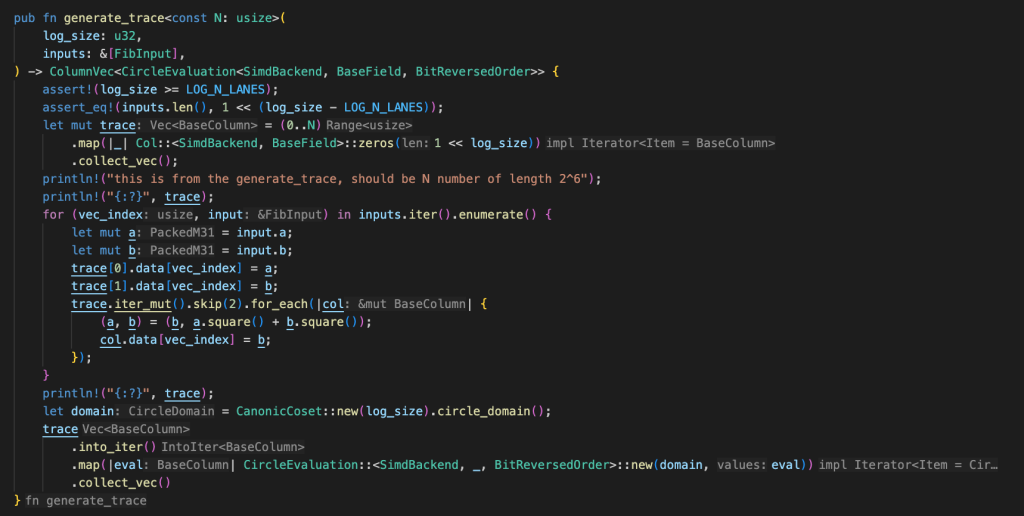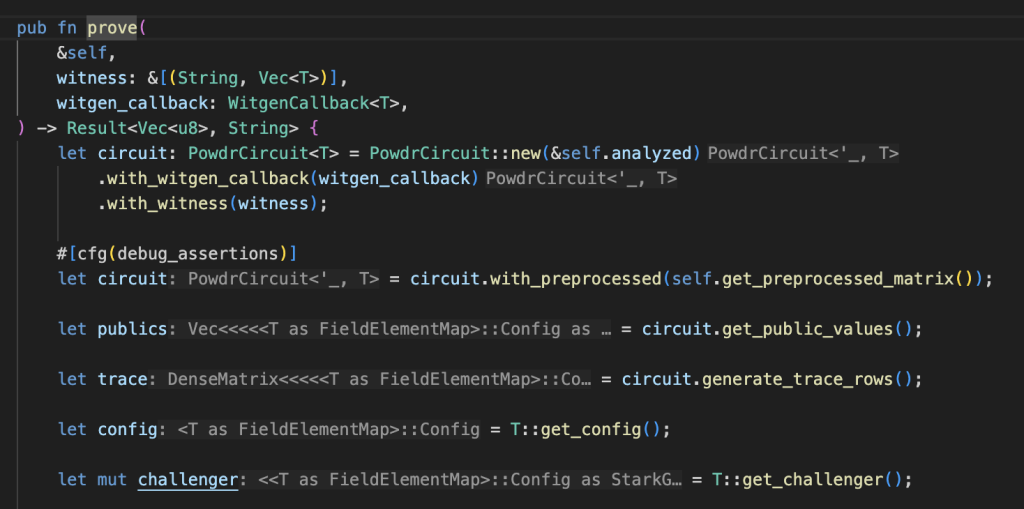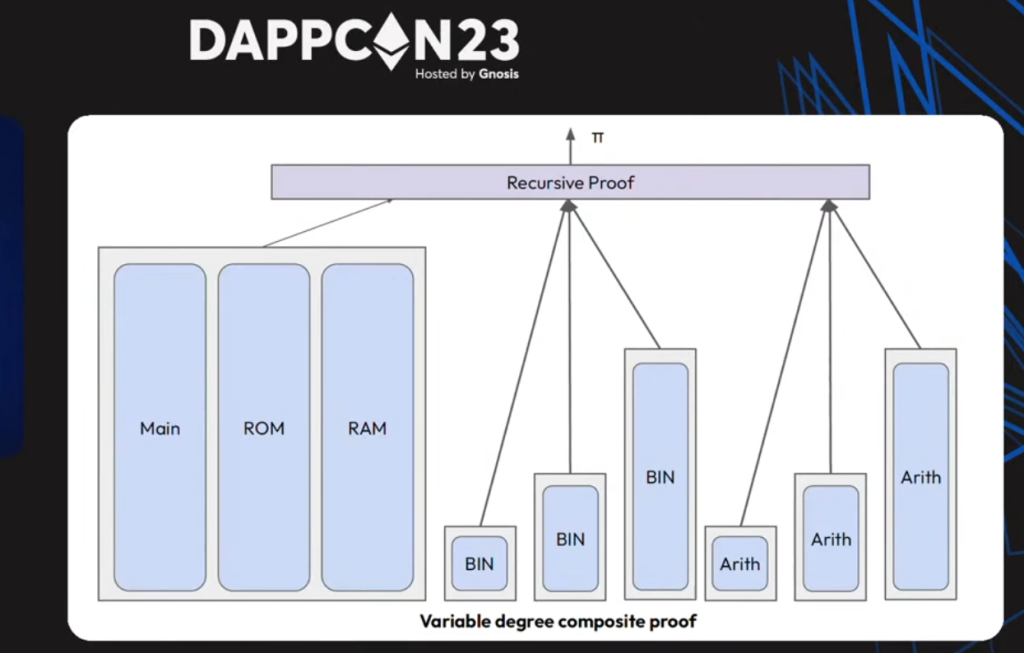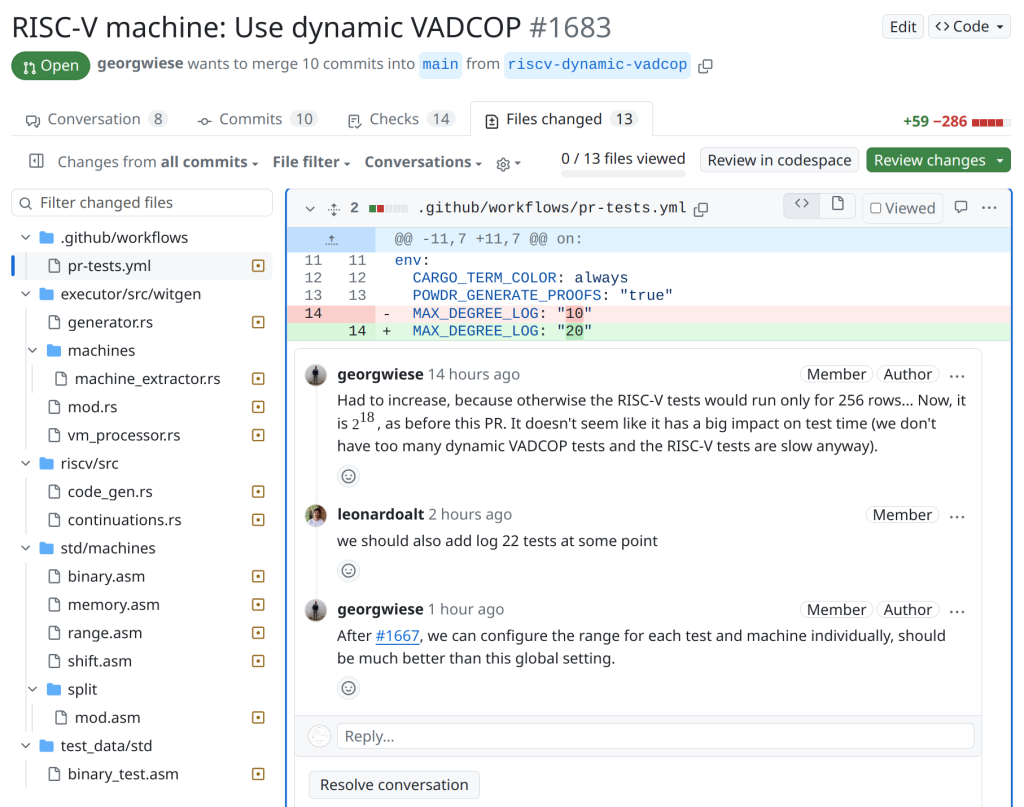There are different ways to describe the GKR algorithm
from Libra paper:
\(\tilde{V}_i(g) = \sum\limits_{x,y \in \{0,1\}^{s_{i+1}}} f_i(x,y)\)
\(= \sum\limits_{x,y \in \{0,1\}^{s_{i+1}}} \left( \widetilde{add}_{i+1}(g,x,y)(\tilde{V}_{i+1}(x) + \tilde{V}_{i+1}(y))\right.\)
\(\left. + \tilde{mult}_{i+1}(g,x,y)(\tilde{V}_{i+1}(x)\tilde{V}_{i+1}(y)) \right)\)
from hyrax paper:
$$\widetilde{V_0}(q’,q)=\sum\limits_{h’\in \{0,1\}^{b_N}}\sum\limits_{h_L\in \{0,1\}^{b_G}}\sum\limits_{h_R\in \{0,1\}^{b_G}}P_{q’,q,1}(h’,h_L,h_R)$$
$$=\sum\limits_{h’\in \{0,1\}^{b_N}}\sum\limits_{h_L\in \{0,1\}^{b_G}}\sum\limits_{h_R\in \{0,1\}^{b_G}}\widetilde{eq_1}(q’,h’)$$
$$\cdot [\widetilde{mul_1}(q,h_L,h_R)(\widetilde{V_1}(h’,h_L)\times \widetilde{V_1}(h’,h_R) )$$
$$+\widetilde{add_1}(q,h_L,h_R)(\widetilde{V_1}(h’,h_L)+ \widetilde{V_1}(h’,h_R) )]$$…













